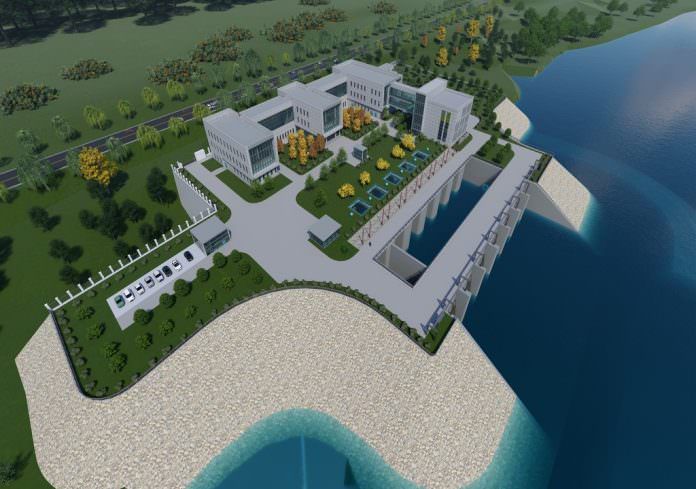BIM Methodologies Help Beijing Water Increase Water Distribution in Northern China
Published on by Water Network Research, Official research team of The Water Network in Technology
The South-to-North Water Diversion Project is a major foundational strategic project to alleviate the severe shortage of water resources in northern China, especially in the capital of Beijing, to optimize the allocation of water resources, and to support the development of Beijing and Tianjin.

South-to-North Water Diversion Project Pumping Station Beijing Institute of Water achieves 60 percent faster modeling times. Image courtesy of Beijing Institute of Water, source: BentleySystems/Flickr.com
The Beijing Institute of Water was tasked with this CNY 3.4 billion project to support the Hexi Branch sub-project in creating construction drawings of multiple pumping stations, water transmission lines, and water treatment plants.
Leveraging BIM methodologies to manage the design and information management, the entire system was designed using 3D modeling and Bentley’s ProjectWise as the central collaboration environment. From these design models, construction drawings and secondary design analyses were conducted using MicroStation for annotation and rebar assessment, greatly improving the efficiency of creating detailed drawings. In addition, the project team used Descartes to create surface digital engineering models and building models, allowing the team to track construction completion digitally, rather than relying on paper queries for information.
Bentley’s HAMMER was used to analyze and calculate the hydraulic transition between the pumping stations and to calculate pressure distribution along the path in case of pump shutdown, ensuring that the system can operate safely under any circumstance. Three-dimensional geological models of the entire site using MicroStation resulted in 60 percent faster modeling times compared to previous 2D methodologies. This process also enabled the direct creation of a complex pipeline mesh model to calculate the shortest clear directions to optimize the design and protection of various pipelines. This innovative, first-of-a-kind approach saved 80 percent in design time compared to previous 2D methods.
By combining full lifecycle management concepts, the Hexi branch project carried out design work of intelligent water in the initial design phase. From this intelligent water design, the project has developed a strong technical basis to support the operation of the project through leveraging 3D collaborative design results, building reliable model information archives and enabling the project to fully realize the digital design, digital construction management, and digital operations.
Xin Yin, the chief engineer of the Information Center for the Institute, stated, “This project is not only an example of a 3D application in water supply engineering for an urban long-distance tunnel, but it is also a successful 3D practice in design, construction, and management. Taking this project as a symbol, we will lead 3D design trends in long-distance, super-large-pipe water transmission engineering, ushering in a new era in the industry in which 3D collaborative design is widely applied to the field of water conservancy design.”
Source: Bentley.com
Media
Taxonomy
- Water Scarcity
- Pumping System Design
- Water Supply
- Infrastructure
- Pumps
- Wastewater Treatment Plant Design
- Distribution Network Management
- Design Engineering
- Industrial Construction
- Pipeline
- Distribution
- Building Information Modeling (BIM)